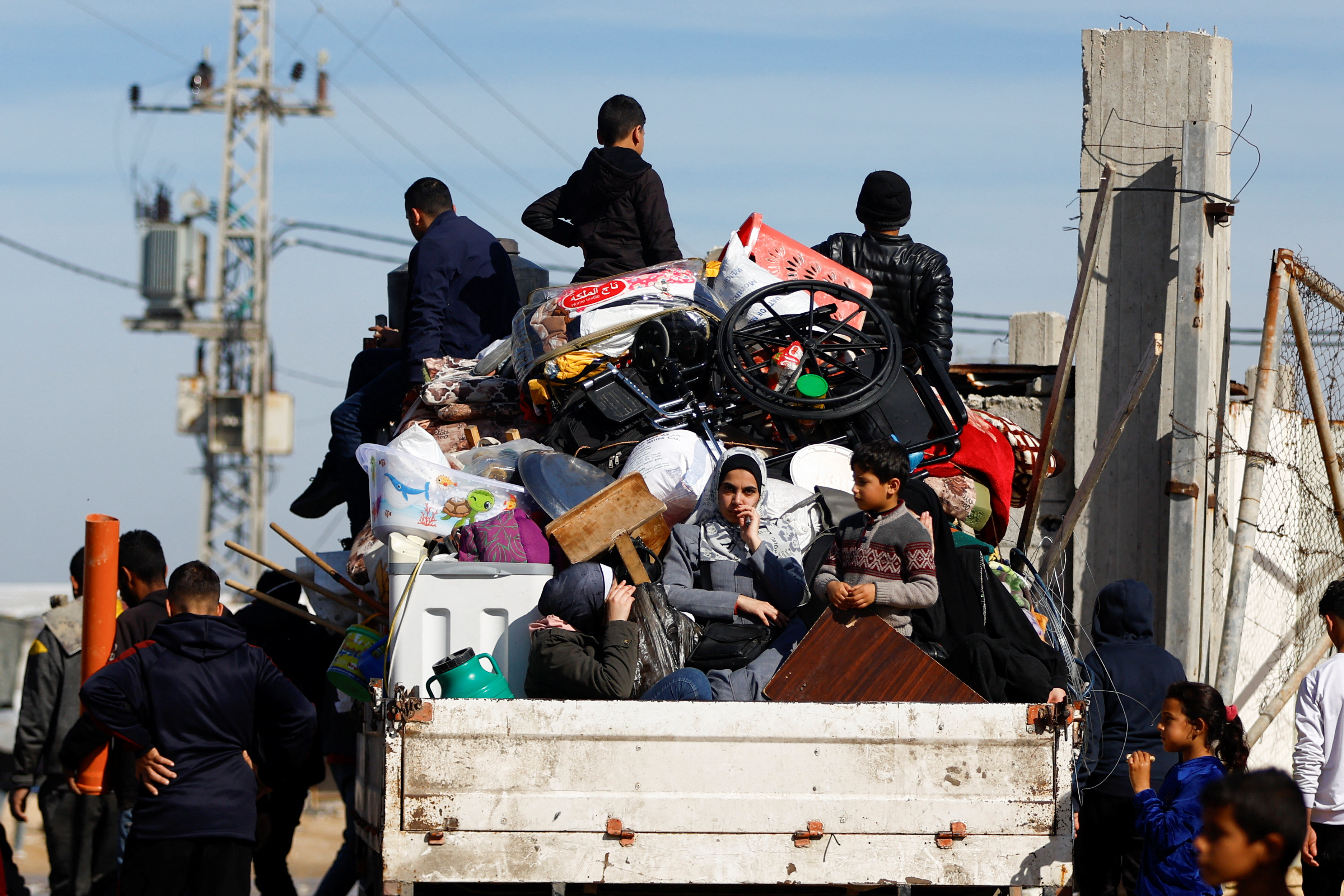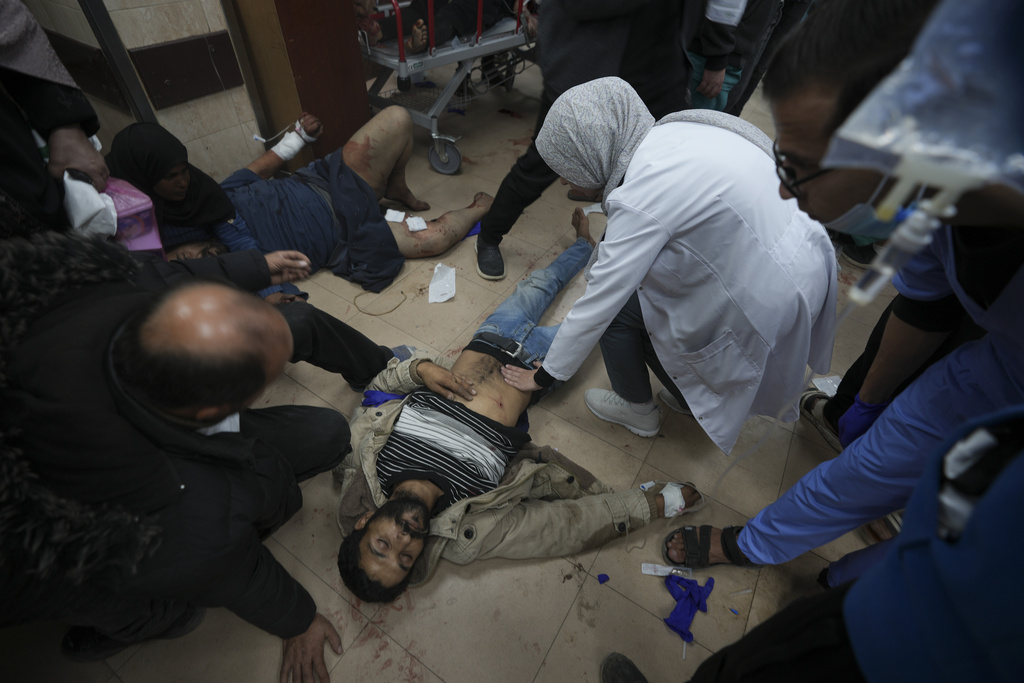
The Israeli army has announced it will scale down its operations in northern Gaza after it “dismantled” Hamas in the area. According to the Israeli military spokesman, Rear Admiral Daniel Hagari, the army has “completed the dismantling of Hamas’s military framework in the northern Gaza Strip”.
Israel released a list with the names of Hamas commanders killed, to suggest that the two northernmost of the Qassam Brigades – a total of 12 battalions – were rendered headless and out of battle.
If 12 battalions were indeed destroyed, it would be a significant strategic victory for Israel and a loss that Hamas will probably not be able to overcome while fighting in other parts of the Strip.
But careful reading of Israeli claims and analysis of both sides’ performance suggests the situation is not a simple “Israeli victory/Hamas defeat”. A more precise description would be “Israeli acknowledgment of a Hamas disengagement in one theatre”.
There is little doubt that Hamas suffered heavy losses while facing a determined and prolonged Israeli offensive using far superior technology and numbers. It is also very likely that a significant number of commanders and deputies have been killed.
Israel uses all means to decapitate Qassam Brigades units by targeting their commanders, often using precision rockets fired from helicopters and drones.
But Hamas has known this for a long time and its units operate on the principle that each commander always has at least one deputy trained and briefed to the same level. When one falls in battle, the chain of succession moves a step up and units are rarely “headless” for more than a couple of hours.
There is also a fundamental difference in the way the Israeli army and the Qassam Brigades operate on the battlefield.
Israel has a well-equipped military organised very classically, where each unit or a battle group has precisely allocated tasks, means at their disposal and areas of responsibility.

It uses those forces very flexibly, with each unit commander highly independent so that they can exploit military opportunities when they arise without waiting for approval from headquarters.
Yet, even though they are flexible, Israeli units still operate under the rules of a hierarchical army where ranks and position determine the commanders’ thinking.
Hamas armed units follow a different fundamental principle: as a non-state force, the Qassam Brigades’ prime consideration is secrecy, protection of the chains of command and maximum separation of units in the field.
Although not guerrillas in the full meaning of the term, Hamas forces aim for a structure designed to ensure the survival of the combat capabilities of other units when one is compromised or lost.
Hamas battalions apparently operate with only basic coordination with their brigade commands. If higher command is lost, as may have happened with the northern brigades when their commanders and deputies were killed within a short time span, battalions can still operate under their last set of coordinated orders.
Having practically independent battalions may be quite inadequate for offensive actions that require precise coordination but, for defence – which is almost exclusively what Hamas has been doing since the beginning of the Israeli land offensive on October 27 – it is usually more than adequate.
The Institute for the Study of War (ISW) lists both the Northern Brigade and the Gaza Brigade of Hamas as “degraded” – a step below “combat effective”, but far from destroyed.
Out of the two brigades’ 12 battalions, ISW lists eight as “degraded” and three as “combat ineffective”, denoting units that have practically broken down, and just one as “combat effective”, practically untouched.
Objective reading of that assessment suggests that Hamas has been seriously weakened but remains capable of putting up a fight, especially in defence.
So why then would Israel claim that the two northern brigades have been defeated and that it would slow down its attacks?
Actually, a careful reading of the statements shows that Israel has never openly claimed that Hamas forces in the north have been destroyed. It has talked about “elimination of senior commanders” and the like, and has mentioned “dismantling”, a very vague and PR-friendly term, but not “destruction” or “defeat”.
The last two words are used by semiofficial influencers on social networks, bloggers and the like, but not by the Israeli army.

In modern warfare, units are seldom “destroyed” in the sense of ceasing to exist, crumbling, being killed, incapacitated or arrested to the last soldier. The nature of today’s battles and the knowledge, competence and information level of unit commands favours disengagement when units cannot fulfil their tasks.
The lay observer’s imagination is often conditioned by movies in which brave defenders make a last stand and fight to the last soldier, like The Alamo, or where exhausted, emaciated and disillusioned defenders surrender en masse, like Stalingrad.
Such dramatic endings are rare. Whenever defenders have an option to disengage from battle, they usually do so when they realise they are disproportionately weaker than the other side or when their supplies or support are compromised.
A sensible commander calls it quits to save whatever forces he might still have, pull them out of the fighting to rest and either reform the units or have the surviving fighters, with valuable recent combat experience against the enemy, join other units.
That is exactly what is likely to have happened in northern Gaza. Seeing that continuing defence in separate pockets against overwhelming force is becoming less effective, Hamas command probably decided to disengage and reform.
Using the tunnels still under their control, several thousand Hamas fighters probably retreated over several days to the central and south zones of the Strip where they are likely to reinforce the remaining three full brigades.







